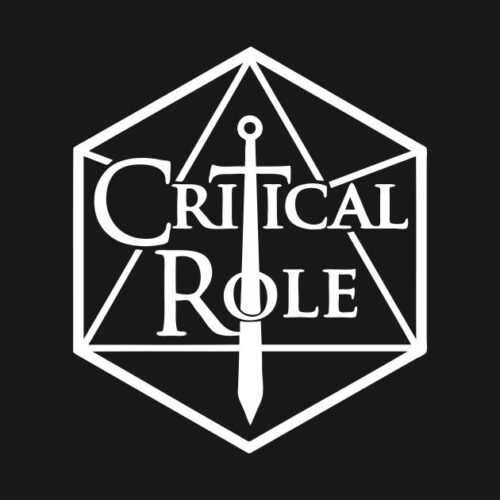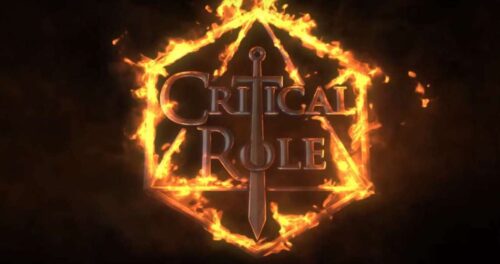“Hello everyone! And welcome to tonight’s episode of Critical Role, where a bunch of us nerdy-ass voice actors sit around and play Dungeons & Dragons!” That’s the phrase Matt Mercer, dungeon master of the show & game, says before the start of every episode of Critical Role – and yes: this is what critically successful storytelling looks like. Let us explain.
If you’re a fan of the show, that introductory phrase will certainly make you giddy with childish excitement. It’s the prelude to what you know is going to be a great time. But if you don’t know what Critical Role or what Dungeons & Dragons (D&D) is… you’re probably left with many questions.
Questions like what is Critical Role, what is D&D, and why are we talking about them? Well, we’re talking about them because the show stands as a critically successful example of excellent storytelling, and therefore marketing as well.
In this post, we’ll break down the phenomenon of Critical Role, why it’s so popular, and how it essentially markets itself with moving storytelling. But first, some context.
What is Critical Role and Dungeons and Dragons?

Critical Role is one of the most popular D&D shows available, with each YouTube episode amassing an average of 1 million views.
You can stream it live on Twitch weekly, or watch via recorded episodes on YouTube. The show features some of the most well known voice actors in the video game genre as cast members, as they portray characters in a Dungeons & Dragons game.
Some members have had appearances in popular movies like The Avengers, or in popular games such as the Final Fantasy Series and Overwatch. The level of voice acting talent in Critical Role is jaw dropping.
As for the game itself, D&D is described as a tabletop roleplaying fantasy game. As a roleplaying game, players become characters in a fantasy world. The world is created by the dungeon or game master, otherwise known as the DM or GM.
The DM creates the setting of the fantasy world, its inhabitants, its conflicts, its civilized regions and uncharted territories. The DM also gives the characters goals and rewards. Then, it’s up to the characters, who work together, to overcome challenges, defeat monsters, and to deploy diplomacy when needed.
It can sound vague, but there are rulebooks, character sheets and dice-rolling mechanics to help this pretend-world play out.
Critical Role: why is it popular?
D&D and Critical Role are storytelling experiences — something that people have connected with for millenia. D&D is like the grown-up version of story time you might’ve had as a child, when a parent or teacher would read a story to you.
The difference is, the players are characters in the world, and experience the world as participants rather than observers. There’s a great increase in involvement when storytelling is done this way.
So, as viewers, we get to see the characters constantly discover new things and develop new goals as they play. Nothing is set in stone until the players make a choice, dice is rolled, and the DM makes a decision. Unlike regular scripted storytelling, this element of improvisation and involvement in the story certainly enriches the experience.
With Critical Role in particular, it helps that the cast members are all professional voice actors. During the show, viewers can see the DM Matt Mercer slip into a variety of characters using his voice acting and physical gestures — whether it’s the shopkeeper, the ally wizard, or the monsters themselves.
Viewers also get to see the players portray very convincing characters. Here’s a compilation of their voice acting feats on the show. If you take a look at the clips and watch this video linked above, you can probably see why D&D can be appealing.

Storytelling brings the success
Aside from the merchandise they sell, which is constantly expanding in options, Critical Role doesn’t offer much outside of storytelling. It’s not like they’re selling a service. And yet, they’re the most successful D&D show online.
That’s the thing — it doesn’t need anything outside of stellar storytelling to be successful.
In 2019 they announced a project, The Legend of Vox Machina. It’s going to be an animated series of the first season of Critical Role. The project was launched on Kickstarter, and after the first day of raising funds, Critical Role surpassed their original goal of $750,000 within hours by raising $1 million, and $3 million by the end of the day.
By the end of the Kickstarter campaign, it had raised $11 million, becoming the most funded animation/film project across Kickstarter, and the 5th most funded Kickstarter project at the time.
Other than that, Critical Role launched an 8-episode series after the end of their second season, and very recently announced the start of the third campaign. The show’s fans, otherwise known as critters, will be very happy once October 21 rolls around.
All this to say people are gobbling up Critical Role’s storytelling like a Thanksgiving dinner. And when episodes are on average 3-5 hours long, you know the content has to be good to retain such success.
Apply generously to your marketing
Here on VoiceTalks we’ve always touted the power of storytelling in your marketing. Critical Role serves as a prime example.
The prescription here is to tell stories, and don’t stop telling them. Enrich your storytelling, fill it with pizazz, emotion, conflict and resolution. It will do wonders for your marketing.
And what better way to tell stories than with professional voice actors? On Critical Role, the whole show’s success is carried by the talent of the cast. So you may want to consider bringing professional voice actors into your storytelling efforts.
Why not visit Voice123? You might not find Matt Mercer, but you can certainly find some of the best voice actors in the world – fantasy world or not.
And now that you know what critically successful storytelling looks like, there’s nothing stopping you doing the same, is there?
May your storytelling enrapture your audience!

